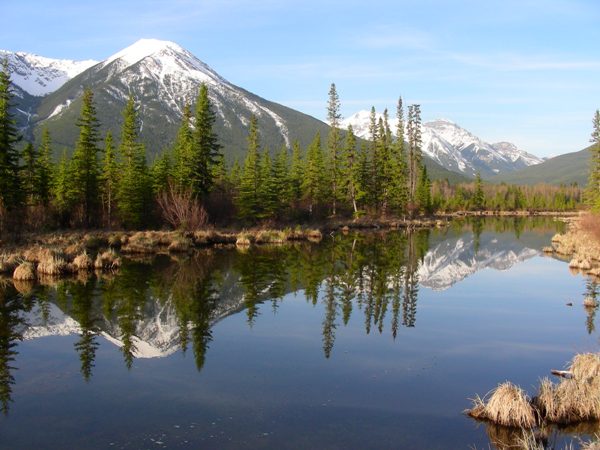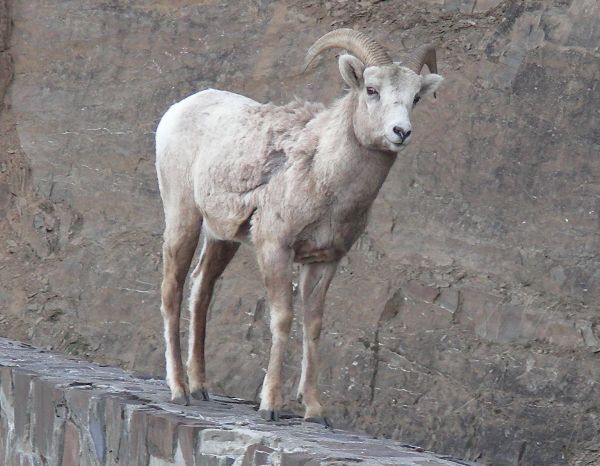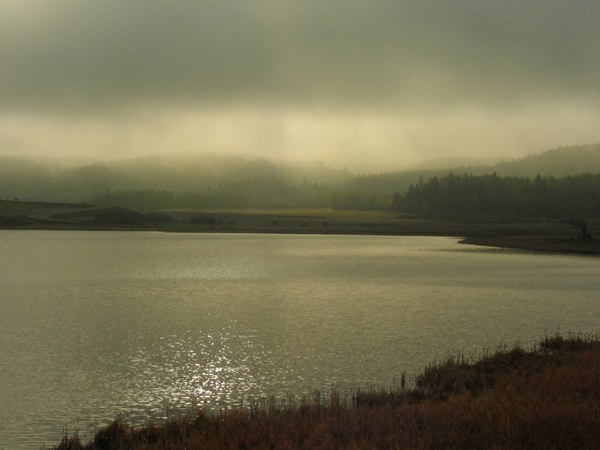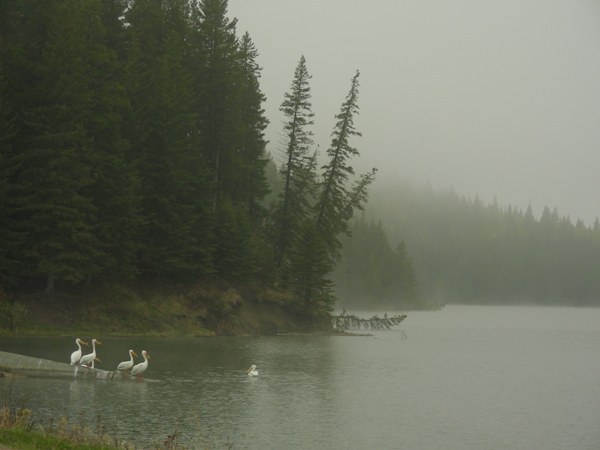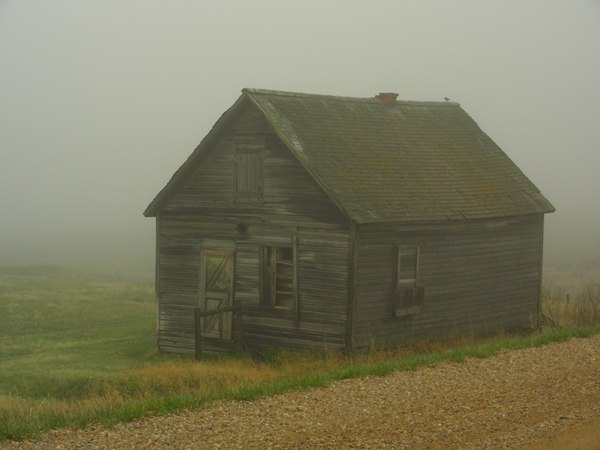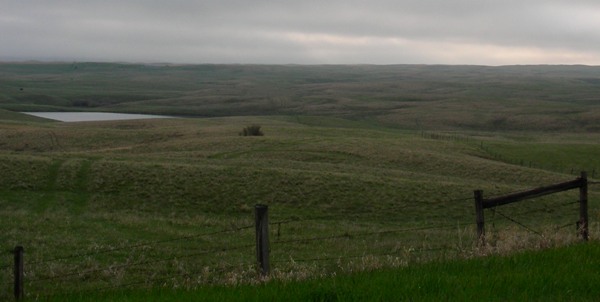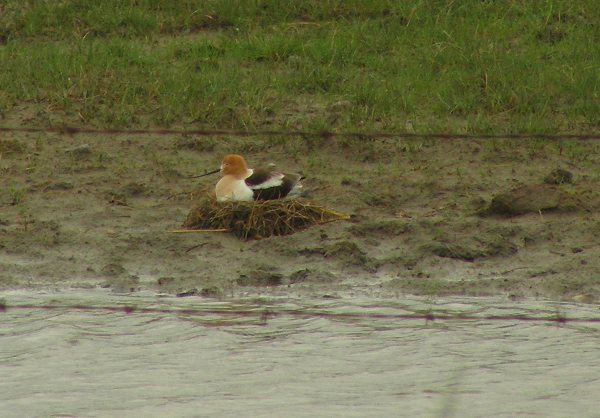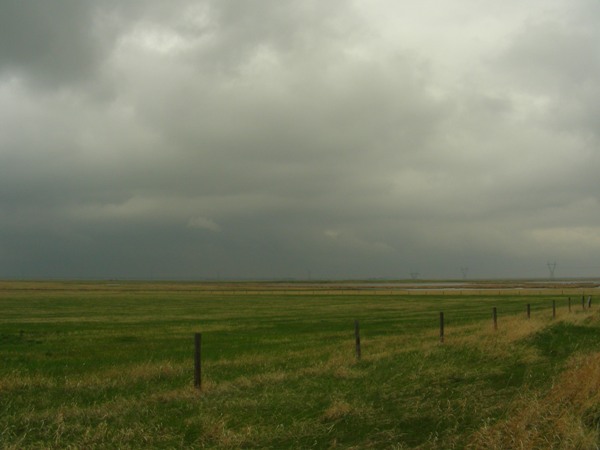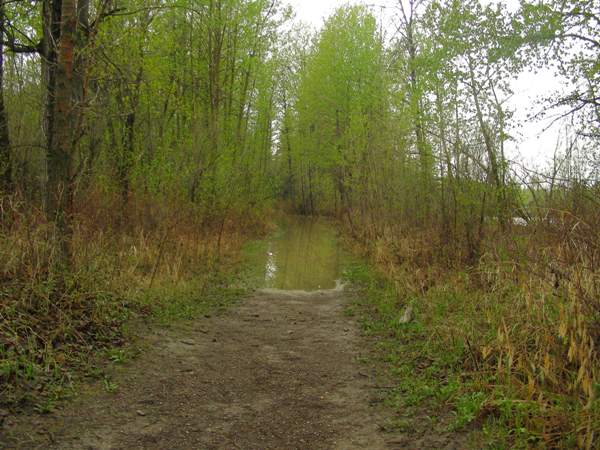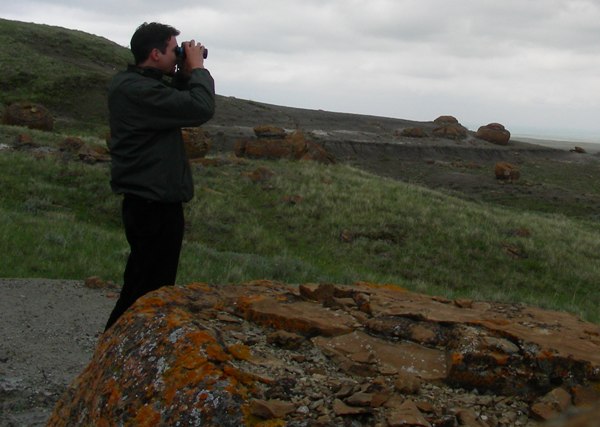|
MIGRATION RESEARCH FOUNDATION |
|||||||||||||||||||||||||||||||||||||||||||||||||||||||||||||||||||||||||||||||||||||||||||||||||||||||||||||||||||||||||||||||||||||||||||||||||||||||||||||||||||||||||||||||||||||||||||||||||||||||||||||||||||||||||||||||||||||||||||||||||||||||||||||
This year many Birdathoners took a 'green' approach to the event, doing all their observations on foot or by bike - for example, see the report by the McGill Bird Observatory team in Montreal. Such a strategy is not only more eco-friendly, but also ensures that more time is spent walking than in the car. Of course, to keep things interesting, a good patch of habitat is required - and while my local park has produced a good list of birds over time, it's usually so overrun with people (and dogs) by mid-morning that doing any prolonged observations there doesn't have much appeal. Also, as I'm still relatively new to Alberta, there are many interesting natural areas I've heard about, but have not yet had a chance to visit. So, I decided that for this year's Birdathon I would focus on exploring one of these areas.
My first thought was to explore the various parts of Banff National Park, and the weather on Saturday of the May long weekend was gorgeous - sunny and warm even in the mountains. But within a couple of hours two things were evident - 1) it was by far the most scenic setting I'd ever been in for a Birdathon, and 2) hardly any migrants were back yet. I knew that by focusing on Banff I'd probably end up with a lower total than on most of my past Birdathons, and I was okay with that because it would be a matter of exploring a smaller area more thoroughly - but still, the lack of bird song in most places just didn't feel right. The bigger problem though turned out to be crowds - I had forgotten just how much of a human invasion occurs in the mountain parks on long weekends, and already by mid-morning I could tell that I was going to be seeing more people than birds on most trails. So, I made one last sheepish (see below) side trip, and then headed back toward Calgary. With a couple of stops along the way home in other habitat I ended up with a list of 83 species for the morning - quite decent all things considered, but not really satisfying given the shortage of migrants.
As luck would have it, the following weekend was the complete opposite in terms of weather - two days of cold rain. To get around that, I rearranged my work schedule to get some writing done on the weekend and take Monday off instead. I had planned to repeat my earlier attempt to explore Banff, reasoning that more migrants must have arrived over the past week, and that on a weekday I'd encounter fewer other people. However, the rain remained socked in there on Monday, so I had to modify my plans. Another area I've been meaning to explore further is the southern foothills, all the way down to Waterton Lakes National Park. Although less rain was forecast for that region, it had been deluged over the weekend and floods were still raging, with warnings for the public to stay away. And with that, it was on to Plan C ... Cypress Hills in southeastern Alberta. I began the day at Police Point Park in Medicine Hat - a nice little oasis that I discovered recently while driving back from Saskatchewan on another trip. It served me well, producing 45 species over my first hour, including 6 that I didn't see again the rest of the day. I was particularly impressed with the raptors it served up, given that on past Birdathons I've rarely started seeing them until later in the morning - this time I had American Kestrel, Prairie Falcon, Broad-winged Hawk, Red-tailed Hawk, and Ferruginous Hawk all in rapid order. However, the park is apparently known for buntings and chats, and I couldn't find either - perhaps even at this late date there are still some migrants lagging behind to the south. After leaving Medicine Hat I turned south myself, heading for the Cypress Hills. Along the way I spotted a nice little wetland that had a nice assortment of ducks and a displaying Wilson's Snipe. Best bird there though was a Sora, that indulged in its bizarre yet kind of endearing habit of calling in response to the start of a car engine. Upon reaching Cypress Hills, it became clear that I hadn't escaped the cold and wet weather after all. The hills may well be quite scenic, but I wouldn't know, as I was enveloped in thick fog for most of my time there. At least the Elkwater Lake area where I entered the park was on the fringe of the fog, and I had good visibility over the water for a little while, allowing me to spot my only Buffleheads of the day, as well as nesting Red-necked Grebes and small numbers of Canvasback, American Wigeon, Eared Grebe, and Northern Shoveler. There was clearly a strong sparrow migration underway, with the trees dripping with Chipping (at least 80 of them just around the parking lot) and smaller numbers of Clay-colored, Lincoln's, and White-crowned. The biggest surprise here though was hearing a few turkeys gobbling away from the woods just a bit inland!
Although productive, the Elkwater area was on the edge of town, and I wanted to get into conifer habitat at higher elevations. Unfortunately, doing so plunged me into the heart of the fog bank - at times visibility was down to less than 50 metres. Even though I couldn't see much of it, I knew that I was on a fairly open plateau ringed with pine and spruce stands. This rare juxtaposition of grassland with conifer forest produced some interesting songscapes - for example, Clay-colored Sparrows and Mountain Bluebirds together with White-winged Crossbill and Black-throated Green Warbler, or Savannah Sparrow and Brewer's Blackbird with Dark-eyed Junco and Yellow-rumped Warbler. Heading further east into the park, I took several short walks, always hoping that I'd be able to move on to another spot where the weather might improve. Along the way though the species kept racking up steadily - a couple of warblers here, a couple of thrushes there. The causeway at the east end of Reesor Lake was particularly interesting. Not only was there a nice little flotilla of pelicans there (which seemed kind of unusual for a bird I'm used to seeing on the open prairies), but the edge of the adjacent woods featured a beautiful male Western Tanager and a scruffy-looking second-year male Rose-breasted Grosbeak. Those birds brought me up to 99 species for the day; a short distance further down the road, a Western Wood-Pewee was calling from an aspen grove for species #100, less than five hours into the day.
When I first turned down the road into Cypress Hills I was impressed that it was paved. Once I reached the Spruce Coulee junction it turned into gravel, but remained wide and good quality. After Reesor Lake, it went down another notch, to a narrow gravel road with the occasional pothole. But rather than accept this pattern at face value, I expected that having reached the midpoint, conditions would improve again as I completed the loop. Let's just say that being an optimist can have its downside ... as the road swung back west, gravel gave way to mud, and as the gradients increased and the ruts deepened I had visions of getting stuck there for a very long time, given that I hadn't seen anyone else since entering the park ~20 km back, and there was no cell phone service in the area (as is the case for remarkably much of rural Alberta). But by the time those thoughts entered my mind I was past the point of no return, as stopping anywhere in that stretch would surely have resulted in getting stuck, so there was nothing to do but try to keep the momentum going. Fortunately my little Civic persevered, though I'm sure not without making a mental note to take its revenge on me some time in the future for this misadventure! For what it's worth, I blame my irrational overconfidence on having driven over 5,000 km for work in 4-wheel drive trucks over the preceding month, while hardly using my own car...
I had planned to stay in Cypress Hills much longer, but after about three hours of straining to see through the fog, I figured it made more sense to move on. Rather than return by the way I came, I decided to take a southern route back to explore a bit more of southeastern Alberta. There is rather little human settlement in this area, dominated by rolling hills and patches of sage amid the grasslands. Lots of Sprague's Pipits, Horned Larks and Western Meadowlarks, with patches of Lark Buntings, Lark Sparrows (sense a theme yet?), and Chestnut-collared Longspurs.
Having somewhat failed on the scenery front in Cypress Hills due to the fog, I stopped at Red Rock Coulee for a late lunch. The light was rather flat, but the landscape was impressive all the same - and a Rock Wren trilling away from one of the outcroppings while Sprague's Pipits spiralled overhead made it all the more impressive.
After Red Rock Coulee I had quite a stretch of uninspiring ground to cover - long stretches of cultivated fields broken up only by the occasional industrial town. Yet even in this bleak landscape, small sloughs tended to have a decent assortment of waterfowl and shorebirds, some of which were already well into nesting. Species I added to my list over this stretch included Double-crested Cormorant, American Avocet, Common Tern, and Cliff Swallow.
The preceding four days of rain had left unpaved roads in rather a mess - and after having already tested my luck enough in Cypress Hills, I decided to stick to the main highways on the way home. This meant that I couldn't return to the spot on the west side of Frank Lake that had produced some interesting sightings for me last year, but the north end was accessible with only a short stretch of gravel to deal with. Right along that access road was a flock of 8 White-faced Ibis. Along with Cinnamon Teal and Least Sandpiper that brought my list to 130 species for the day..
Heading back into Calgary with windshield wipers going full speed (memories of last year's Birdathon), I was very happy with the length of my list, though perplexed by some of the omissions - from an easterner's perspective it seemed bizarre to have 13 sparrow species, yet no White-throated! I knew that White-throated Sparrows sing incessantly at the Weaselhead Nature Reserve, and since it was only a couple of minutes out of my way home anyway and the rain had stopped again by that time, I dropped in for a visit. Sure enough, no sooner was I in the parking lot than I heard the first of several males singing away. I also managed to spot a distant Common Goldeneye and a Yellow-bellied Sapsucker from near the beginning of the trail. But then I got to looking at the spruce grove across the Elbow River and wondering whether I could find Golden-crowned Kinglets there ... so down I went - and sure enough, I was able to find a trio working their way from tree to tree. What I failed to consider was that the Elbow River had flooded too, albeit not as severely as neighbouring watersheds to the south. But being slow to learn my lesson from earlier in the day, I again saw terrain conditions deteriorate as I went along, denying in my mind the possibility that the path would become truly impassable. At its worst (see photo below) the trail simply turned into a long deep pool. I circumvented that, but even so, ended up three-quarters of the way back and blocked by a temporary river running across the path ... it was shallow, but enough to make my feet a bit wet.
I ended up getting home with a couple of hours of daylight to spare - had I been competing hard for a big list, I'm sure I could have easily tacked on another dozen or so species by heading out toward Banff during that time. After all, from my relatively short list the week before, there were a dozen species I hadn't yet seen on this day. However, since my intent had been to focus on the Medicine Hat / Cypress Hills area and I'd already lucked into so many other species along the way back from there, I chose to stay home, dry out, and see whether I could luck into any other birds from the balcony. The Pine Siskins that have been around daily since mid-winter didn't disappoint, and a Hairy Woodpecker flying among the spruces rounded out my day's count at 136 species. While I did find White-throated Sparrow after all, there were still some strange misses - or so they seemed to me at least. These included Common Loon, Alder Flycatcher, Blue Jay, White-breasted Nuthatch, Red-eyed Vireo, and Cedar Waxwing - though maybe these shouldn't have been so surprising in that I missed all of them on last year's Birdathon too! Just goes to show that what's common in one area is a rarity in another, and getting used to a new region is an ongoing learning process. This year's final list is posted below. Ultimately it ended up quite similar to last year's, the biggest difference being a significant increase in warbler and finch species seen this year, while fewer shorebirds seemed to be around. For the second year in a row I had 17 waterfowl, this time followed by 14 sparrows and 12 shorebirds. For the first time in several years I completely struck out on owls; other groups missed entirely include loons, nightjars, and hummingbirds. Maybe in a different area again next year, some of those will turn up while others will fall by the wayside - every year has its own highs and lows. If you've already contributed to my Birdathon this year, thank you so much for your support! Once again, we're counting on Birdathon proceeds to contribute significantly to our continued operation of migration monitoring programs at McGill Bird Observatory, where we are trying to maintain consistent coverage from year to year so that we can detect population trends over time. Also, proceeds will help support a new phase of Short-eared Owl research beginning next winter. In case you didn't make a pledge in advance of my count, but would still like to support this year's Birdathon, it's not too late to make a flat-rate donation online. Thank you all!
Alberta Birdathon, May 26, 2008 --- List of 136 bird species seen and/or heard
|

